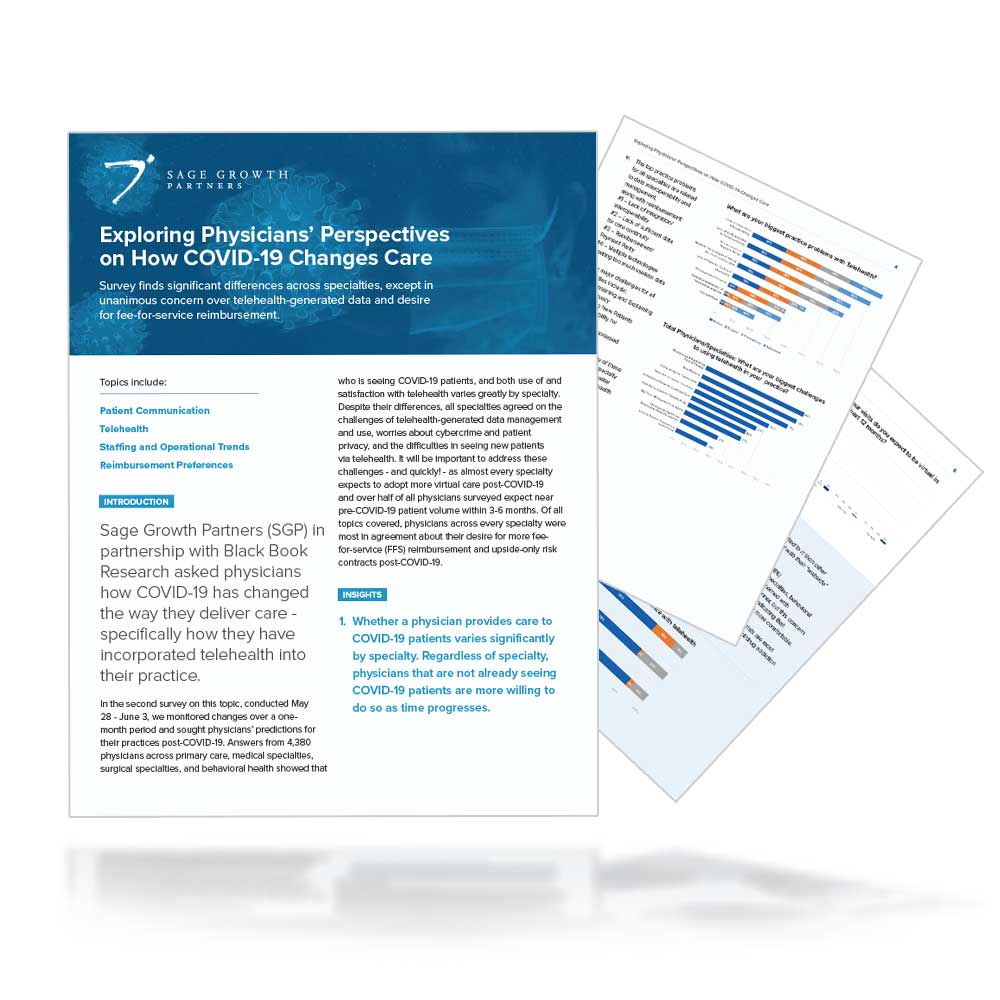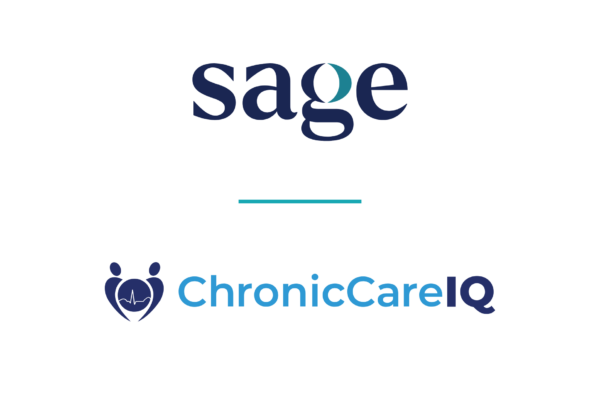Patient outreach falls short, physicians call for more fee-for-service reimbursement, and telehealth use increases, despite integration challenges
Baltimore, MD – July 9, 2020 – Sage Growth Partners (SGP) today announced findings from a new survey of U.S. physicians that assesses how COVID-19 has changed the way they deliver care—specifically how they have incorporated telehealth into their practices. The survey was administered to 4,380 physicians across the U.S. in primary care, medical and surgical specialties, and behavioral health from May 28 – June 3 2020. It follows a previous physician survey conducted the week of May 20 2020.
As the COVID-19 pandemic continues to dramatically affect people’s lives across the country, consumer concerns about seeking in-person care persevere. This new physician survey aimed to uncover physician’s perspectives on, and challenges with, delivering care in the midst of a national health crisis.
Download the full report here.
Key findings include:
Financial troubles are widespread but are not expected to have long-lasting impact
- More than half of physicians (55%) across all areas with the exception of behavioral health reported that they had either been furloughed or taken pay cuts.
- Only 10-12% of respondents plan on closing their offices for an extended period or permanently.
- Physicians overwhelmingly call for more fee-for-service (FFS) reimbursement post COVID-19, with 92% of primary care, 83% of surgical, 80% of medical specialty, and 75% of behavioral physicians citing this preference.
- The large majority of physicians also want to see more upside-only risk contracts post-COVID-19, with 83% of behavioral, 81% of surgical, 77% of primary care, and 74% of medical specialty physicians citing this preference.
Telehealth use ticks up, but challenges remain
- All specialties are more likely to be treating patients through telehealth now versus in May. The biggest change was in behavioral health, where 43% of physicians were treating patients using telehealth in May, versus 64% now.
- Almost two-thirds of primary care (64%), behavioral health (64%), and medical specialties (62%) are providing telehealth services, whereas only a quarter (24%) of surgical specialties are.
- Three quarters (76%) of behavioral health specialties are extremely or somewhat satisfied with telehealth, but less than half of medical specialties (49%) and a quarter of primary care specialties (26%) express satisfaction. Surgical specialties expressed the lowest levels of satisfaction with telehealth at 25%.
- The top four problems practices have with telehealth are: lack of integration/ interoperability (No. 1), lack of sufficient data for care continuity (No. 2), reimbursement/payment parity (No. 3) and multiple technologies creating too much useless data (No. 4).
- The top four challenges to actually using telehealth are: maintaining and explaining patient privacy (No. 1), seeing new patients (No. 2), vulnerability for cyber-crime (No. 3), and the need for increased insurance (No. 4).
- All specialties overwhelmingly believe that fewer than 10% of their visits will be conducted virtually over the next 12 months. This is despite the uptick in telehealth use reported by respondents, as well as a significant consumer access to telehealth (51%), and satisfaction in using it (78% satisfied with their telehealth experience) according to a previous consumer survey.
Patient outreach during COVID-19 falls short
- During the pandemic, primary care physicians neglected to reach out to over one-third (35%) of their non-scheduled patients. Despite this, they are the most communicative of all specialties.
- More than half (53%) of behavioral health specialties did not reach out to non-scheduled patients and the majority of medical specialties (82%) and surgical specialties (85%) failed to actively connect with non-scheduled patients.
Providers expect to return to pre-COVID-19 patient volumes within 3-6 months
- The large majority (78%) of respondents believe their practices will return to pre-COVID-19 patient volumes within the next 3-6 months. Behavioral specialties are the most optimistic, with 41% of these respondents expecting to return to pre-COVID patient volumes within a month and 24% believing these volumes will be met within 2-3 months.
- All specialties expect to reduce office hours and staffing, with surgical specialties expecting the greatest impact to office hours (77% believe hours will be reduced) and primary care expecting the greatest impact to staffing (68% believe staffing will be reduced).
- The large majority of behavioral (93%) and primary care (62%) providers expect to conduct more virtual care visits. In sharp contrast, only 30% of surgical specialties and only 27% of medical specialists expect to adopt telehealth as a long-term alternative.
“As COVID-19 continues to disrupt daily living, telehealth is just one way the healthcare industry is fighting to adapt to this new reality,” said Dan D’Orazio, SGP’s CEO. “It’s encouraging to see telehealth use increase across the board, but physicians are struggling with some real implementation challenges, because this technology was not widespread before the health crisis. In a sense, we’re building the plane while we’re flying it—interoperability with the EHR, efficient data management, and reimbursement still have a long way to go. With that said, it’s not surprising that physicians are clamoring for more fee-for-service reimbursement, especially as they endure cuts to their pay, patient volumes, hours, and staff. It’s clear COVID-19 isn’t going away any time soon, and physicians will need to adapt, not only in terms of care delivery, but in how they engage patients and coordinate care as well.”






